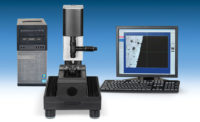WHARTON, NJ –Special Optics , a Navitar company and vertically integrated supplier of precision optical components and assemblies for high-technology applications, recently completed the design and assembly of a custom 500 millimeter focal length telescope that will be deployed in NASA’s MABEL laser altimeter instrument. MABEL is an aircraft-based simulator for the Advanced Topographic Laser Altimeter System (ATLAS) instrument that will fly on board the second generation Ice, Cloud, and Land Elevation Satellite (ICESat-2) to measure global changes in polar ice coverage.
Special Optics was contracted by NASA to design and build two 500 millimeter focal length telescopes for the new ICESat-2 mission, scheduled to launch into orbit in 2016. The ICESat-2 will replace the original ICESat satellite, which successfully collected ice, cloud, topography, and vegetation data from 2003 to 2009. In order to gather information prior to the ICESat-2 launch, NASA is conducting a series of airborne campaigns using the MABEL instrument.
The athermalized 500 millimeter telescope units, with titanium mechanics, require precise assembly and testing to ensure they are identical in focal length. When used in the aircraft, one telescope will transmit multiple laser pulses and the other telescope will receive the ground reflected light. Using the transmitted and received signals, and precisely measuring the time between pulses, NASA can map the terrain of the earth.
This project has significance to Navitar (Rochester, NY), Special Optics’ parent company. Navitar’s connection to NASA dates back more than 40 years when Navitar produced an 8 millimeter camera lens used to capture historical satellite images of the Television Infrared Observation Satellite, the world’s first weather satellite.
“Navitar and Special Optics produce optics widely used for military, defense and homeland security applications,” said Navitar Co-President Jeremy Goldstein. “We are pleased to have a continued relationship with NASA and other aerospace agencies and strive to fulfill their optical needs for aerial and space imaging.”
Get our new eMagazine delivered to your inbox every month.
Stay in the know with Quality’s comprehensive coverage of the manufacturing and metrology industries.
SIGN UP TODAY!Copyright ©2024. All Rights Reserved BNP Media.
Design, CMS, Hosting & Web Development :: ePublishing


